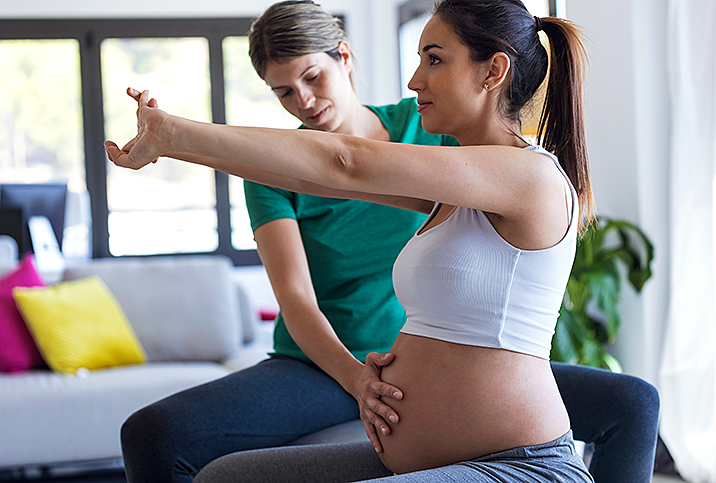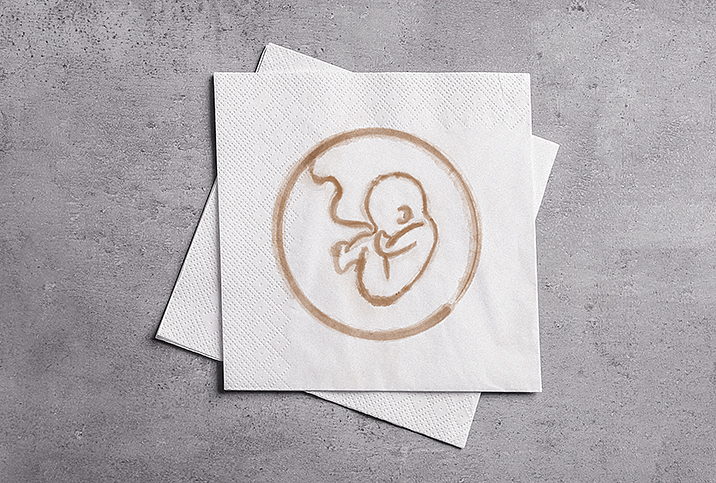The Positive Effects of Exercise and Breathwork During Pregnancy

Pregnancy is an extremely taxing life event akin to an almost 10-month stint as an endurance athlete. But, fitting in exercise and breathwork can help provide some real benefits to your body now and later.
Why should you exercise during pregnancy?
Research indicates pregnancy pushes the limits of human energy expenditure, putting pregnancy fatigue and food cravings in a whole new perspective. So if the thought of exercising during pregnancy seems daunting, it's for a good reason. However, prenatal exercise has some real benefits.
"Beyond boosting your mood and energy levels, improving your sleep, and relieving backaches and swelling, your physical activity level during pregnancy plays an important role in labor and delivery," said Patricia Wallace, M.D., a pelvic health specialist with Mission Hospital in Southern California.
Prenatal exercise has been shown to have many benefits throughout pregnancy and during labor, including the following:
- Shorter labor
- Reduced risk of gestational diabetes, hypertension and preeclampsia
- Reduced chance of cesarean delivery
- Lower preterm birth rates
What's more, keeping active during pregnancy has benefits for the baby, too. Research suggests regular physical activity helps improve optimal growth for the child throughout their lifespan.
The good news is you don't have to toil away at spin class or lug heavy weights if that's not your thing (although those choices are perfectly acceptable with doctor approval). A few specific exercises can prepare your body for the work of birth, setting you up for the best possible outcome.
Pregnancy and birth experiences are unique for everyone, and things often do not go as planned—and that's okay. Even with the best intentions, hopes, and plans for pregnancy and birth can turn out differently. But putting yourself in the best position for success can be empowering during a time when your body is changing rapidly out of your control.
How can I safely exercise during pregnancy?
"I view exercise during pregnancy as having three main purposes: to support a pain-free pregnancy (or keep you as comfortable as possible), to support your birth, and to support postpartum recovery. And, of course, all of those things are related," said Kelly Bryant, a certified prenatal yoga teacher and personal trainer.
While your exercise goals may change throughout your life, during pregnancy, it's important to focus on building stamina and strength. Before beginning any full-body workout routine, speak with your doctor.
Build stamina
An exercise routine that helps build stamina can greatly assist you during delivery. "Heart-healthy aerobic exercises, such as walking, swimming and stationary biking, are all great low-impact options that you can perform in all three trimesters. Prenatal yoga, using a birth ball, and Kegel exercises can help to prepare your body for labor," Wallace said.
Bryant agrees: "In general, maintaining your cardiovascular health, strength and stamina will all support birth, as birth is an incredibly physically demanding activity." Find a form of cardiovascular exercise you enjoy. When you start feeling fatigued, stop and always drink plenty of water.
Wallace advised pregnant people to aim for "twenty to thirty minutes of moderate aerobic activity most days of the week." She also recommends that women who haven't exercised in a while should build up to regular exercise and not overextend themselves immediately.
You may not be able to perform at the same level of intensity as you did pre-pregnancy, nor should you expect to. Listen to your body. If you’re feeling tired, then take a break. Get plenty of rest between training sessions.
Focus on strength training
There are so many body changes during pregnancy. Drastic changes occur in the hormonal and metabolic systems, cardiovascular and respiratory systems, and the musculoskeletal system—especially the pelvic floor and abdominal wall during pregnancy.
Certain areas of the body are more prone to pain and strain. Strengthening these areas can help reduce symptoms while helping your body prepare for delivery.
"Focus on strengthening and stretching the muscles in your back, thighs and pelvis—these muscles play an important role in your delivery," Wallace said. "In fact, if your muscles are strong, you might experience an easier delivery. Having a strong core and pelvic floor before and during pregnancy can help you to have an easier recovery."
Bryant recommends focusing on the support structures of the pelvic floor. "Specifically, I train my clients to keep their pelvis aligned with lots of hip stability work, strengthen their transverse abs, which can help with the pushing stage of labor, and to make sure that they also know how to release their pelvic floor so that their baby can actually be born."
Some of Bryant's favorite exercises are:
- Single-leg glute bridges or hip thrusts on a bench if the person isn't comfortable on their back
- Dead bugs for ab strength
- Diaphragmatic breathing
- Half happy baby stretches for learning to release the pelvic floor
Every body is different. Check with your doctor before starting any exercise routine while pregnant.
Connect with your breath
Your breath is vital to performing any exercise. Connecting to your breath can help you know when to tighten or release your pelvic floor muscles and protect your spine during movement.
Here's how to do it:
Align your body
- Start by standing tall with your rib cage over your pelvis, shoulders back and down.
- Maintain a natural curve in your spine without arching or hunching your back.
- Bring awareness to your core muscles, from your diaphragm to the pelvic floor muscles.
Connect your breath
- Sit on a firm surface, maintain the alignment above, with one hand on your stomach and one on your chest.
- Take a breath, feeling the air push into your hands. Picture your pelvic floor as a balloon being filled with your breath.
- Breathe out and feel your hands sinking and lowering as your lungs and stomach deflate.
- Envision your pelvic floor "balloon" deflating upward.
Enhance your breath
- Breathe in, picturing your vagina and anus filling with air and pushing your sit bones apart.
- Breathe out while focusing on the flow of your breath leaving your rib cage, stomach and pelvis.
- Feel the muscles of the vagina and perineum slightly pulling upward and tightening when you exhale.
- Practice this technique for 1 to 2 sets of 10 each day.
- Use this breathing pattern while performing daily tasks or exercises involving lifting, twisting or carrying loads.
The bottom line
When it comes to pregnant women and exercise, some activity is better than no activity. Choose low-intensity activities you can safely do. After speaking with your doctor for approval, consider reaching out to a professional if you could use a little coaching.
Need a new doctor or other healthcare professional? Giddy Telehealth offers a convenient online portal. Find the right fit for you. Many offer same-day appointments or video consultations.


















